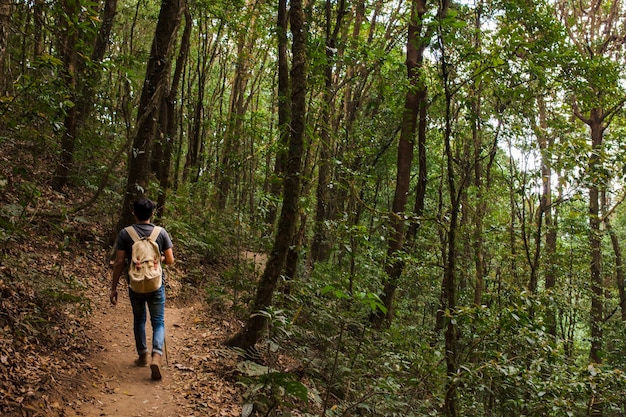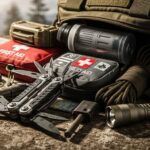In the field, batteries die, signals drop, and satellites fail. When that happens, your ability to navigate without GPS can be the difference between getting home safely or wandering deeper into danger. Tactical navigation isn’t about fancy gadgets — it’s about reading the land, the sky, and your environment to move with confidence.
Let’s break down the essential skills every survivalist, prepper, or tactical operator should master when modern tech is off the table.
1. Map & Compass — The Classic Duo
- Compass Basics: Learn how to set a bearing, orient a map, and adjust for magnetic declination.
- Topographic Maps: Elevation lines, rivers, and terrain features tell you far more than a flat road map.
- Pro Tip: Always carry a backup compass — a lensatic or baseplate — in your kit. Practice shooting bearings until it feels second nature.
2. Natural Navigation — Using the Environment
When no gear is available, the land itself becomes your guide.
- Sun Position: Rises in the east, sets in the west — use shadows to track direction.
- Stars: The North Star (Polaris) in the Northern Hemisphere always points north. In the Southern Hemisphere, use the Southern Cross.
- Trees & Moss: Moss tends to grow on the shaded (often north-facing) side in the Northern Hemisphere — but confirm with multiple clues.
- Water Flow: Rivers and streams often lead to civilization or lower ground.
3. Landmarks & Terrain Association
- Pick handrails (like rivers, ridges, or roads) to follow without getting lost.
- Use catching features (large landmarks like cliffs, lakes, or valleys) to know when you’ve gone too far.
- Memorize terrain silhouettes — hills, valleys, and ridges form natural maps.
4. Dead Reckoning — Counting Your Steps
Sometimes, you won’t have landmarks. That’s when pace count comes in:
- Count how many steps you take in 100 meters. Mark that number for flat ground, uphill, and downhill.
- Use a small bead system (Ranger beads) to keep track of distance traveled.
- Combine with compass bearings to estimate your exact position.
5. Weather & Sky Cues
- Cloud Movement: Watch wind and cloud direction for consistent orientation.
- Moon Shape: A crescent moon “horns” point south in the Northern Hemisphere.
- Animal Behavior: Birds often fly toward water sources at dawn/dusk.
6. Emergency Navigation Hacks
When all else fails:
- Use a stick and shadow: Place a stick upright, mark its shadow tip, wait 15 minutes, mark again — the line between marks runs east–west.
- Use a watch as a compass: In the Northern Hemisphere, point the hour hand at the sun. The line halfway between the hour hand and 12 points south.
- Improvised Compass: Float a magnetized needle on water using a leaf or paper — it will align north-south.
7. Training Your Navigation Mindset
- Practice regularly: Try a short hike without GPS, using only a compass and map.
- Record routes: Sketch simple hand-drawn maps during walks to sharpen terrain association.
- Stay calm under stress: Panic leads to poor decisions. Stop, orient, plan, and move deliberately.
8. Tactical Movement & Navigation Tips
- Stay oriented: Always know your last confirmed position.
- Move with purpose: Don’t wander aimlessly — pick a bearing, follow it.
- Avoid skyline exposure: When moving tactically, contour around hills instead of silhouetting yourself.
- Silent markers: Use rocks, sticks, or natural signs to leave signals for teammates without attracting attention.

Final Thoughts
GPS is convenient — but overreliance makes you weak. A true survivalist or operator has the skills to navigate using the old ways: maps, compasses, stars, and terrain. Mastering these tools ensures you’re never helpless when technology fails.
Remember: the land always speaks — you just have to learn its language.
















